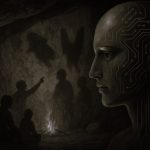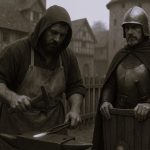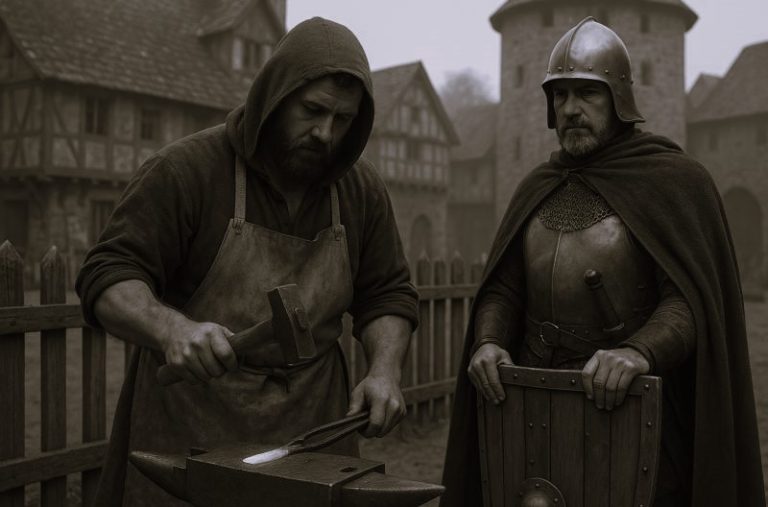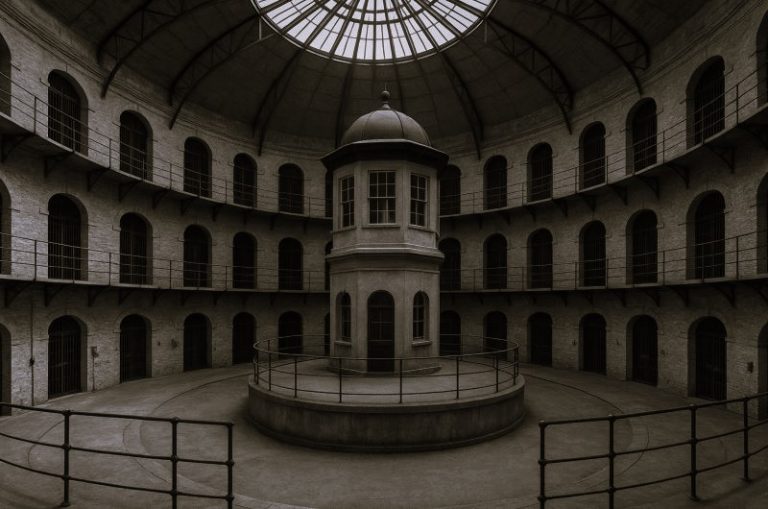


By Arienne King
Introduction
This image gallery is a visual guide to the gods and goddesses of ancient Egypt. It includes depictions of many of Egypt’s more iconic and widely worshipped deities, along with brief descriptions of their roles in Egyptian religion. Each of Egypt’s gods filled an important role in the proper functioning of the cosmos. Elemental gods watched over everything from the annual flooding of the Nile to the solar and lunar cycles. Other gods and goddesses protected humanity from disease and dangerous animals or provided inspiration to craftworkers and physicians.
These deities permeated Egyptian culture and were frequent subjects of Egyptian art and literature. Many were depicted with distinctive attributes such as clothing and objects. They were also often associated with a specific animal or animals. For example, Anubis is recognizable by his jackal-head, while Hathor is known for her bovine horns. Even today, the gods of Egypt loom large in the imagination, and are easily recognized by their iconic features.
Atum: Universal Creator

Atum was the universal creator deity in Egyptian mythology. He willed himself into existence in the beginning, emerging out of the dark primordial waters (Nu) that existed before creation. Sitting upon the primordial mound, he felt loneliness and created the gods.
Shu: Air and Wind

Shu was the god of air and wind, the first of the gods created by Atum. He was the consort of Tefnut, whom Atum created next. According to Egyptian mythology, Shu and Tefnut were created so that Atum would not be alone in existence.
Tefnut: Moist Air

Tefnut was the goddess of moisture and moist air and the sister-wife of Shu. Together, Shu and Tefnut had two children, the earth god Geb and the sky goddess Nut.
Geb and Nut: Earth and Sky

Geb was the primordial god of the earth and the father of snakes. He fathered Osiris, Isis, Set, and Nephthys with the goddess Nut.

Nut was the goddess of the sky and wife of Geb. She is frequently depicted as a woman whose body stretches from the eastern horizon to the western horizon.
The Ogdoad: Primordial Egg

The Ogdoad were eight primordial deities who, according to some myths, existed before creation and hatched the world from a primordial egg. Each of the four pairs within the Ogdoad represented an aspect of creation; Heh and Hehut represented infinity, Nu and Nunet represented the primaeval waters from which the world emerged, Kek and Keket represented darkness, and Amun and Amunet represented obscurity and invisible power.
Ra Horakhty: The Sun

Ra was the Egyptian god of the sun, often depicted with a falcon head. He was the creator and supreme ruler of all realms: the earth, the heavens and the underworld. Ra’s other main attribute was the solar-disk which represented the sun.
Ram of Amun

Amun was the ruler of the sky in Egyptian mythology and at times considered to be king of the gods. Amun was originally depicted as a bearded man, before later being commonly depicted as a ram.
Amun-Ra

Ra and Amun were eventually combined into the deity Amun-Ra, whose role was of central importance in Egyptian religion. As Amun-Ra, he appeared as a man with the solar-disk of Ra upon his head.4
Akhenaten, Nefertiti, and Their Three Daughters

Aten was a solar deity worshipped during the Amarna Period. Aten was at the center of Atenism, a monotheistic religion promoted by Akhenaten (r. 1353-1336 BCE) which held Aten to be the one true god. Under Akhenaten, Atenism replaced the prominent cult of Amun and eclipsed all other gods. Atenism was considered a heresy in Egypt, and worship of Aten quickly faded after the death of Akhenaten.
Khonsu: The Moon

Khonsu was the Egyptian god of the moon. He was worshipped as part of the Theban Triad, which consisted of himself, his father Amun, and his mother Mut.
Mut: Primordial Mother
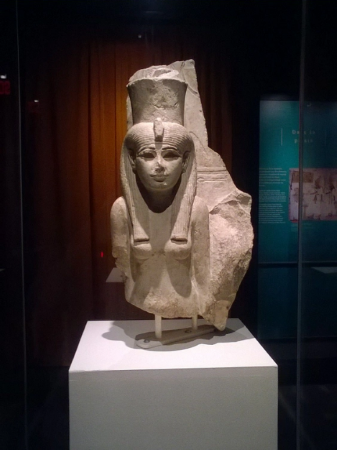
Mut was a primordial mother deity, said to have existed before the creation of the world. She was usually considered to be the wife of Amun and mother of Khonsu, with whom she was worshipped in Thebes.
Theban Triad: Amun, Mut, and Khonsu

The Theban Triad was widely worshipped in the area of Thebes during the New Kingdom of Egypt.
Apophis: Evil Serpent

The serpent Apophis (also called Apep) was an evil figure in Egyptian mythology, as a force of chaos and the adversary of Ra.
Osiris: Judge of Souls

Osiris judged the souls of the dead and symbolized rebirth after death. He was usually depicted as a mummified pharaoh, with green or black skin to represent growth and fertility.
Isis: Patron of Women

Isis was the patron goddess of women, magic, and healing. As the wife of Osiris and mother of Horus, she was associated with queenship. Isis had a prominent role as protector of women and children. She was often depicted wearing a hieroglyph resembling a throne on her head.
Amun-Min: Fertility

Min was a fertility god worshipped from the Predynastic Period in Egypt onwards, making him one of the oldest Egyptian deities. The Min festival was celebrated in late summer to promote prosperity and bless the harvest. Min was often depicted with an erect phallus and black skin to represent fertility, as the black soil along the Nile river banks was exceedingly fertile.
Horus: Kingship

Horus was the son of Osiris in Egyptian mythology. He was associated with the Pharaoh and represented divine kingship. He was often depicted as a falcon or a falcon-headed figure.
Set: Chaos

Set was a complicated figure in Egyptian mythology, associated with chaos, storms, violence, and deserts. He was originally the defender of Ra but later became an antagonist in Egyptian mythology. In a defining myth, Set conspired to kill his brother Osiris so that he could usurp the throne. Set was depicted with the head of a red animal with a long, curved face.
Nephthys: Magic and Protection

Nephthys was associated with magic and protection like her sister Isis, and the two are frequently depicted together as twins. She was the wife of Set and gave birth to Anubis after tricking Set’s brother Osiris into lying with her.
Anubis: Afterlife

Anubis was the god of mummification and the afterlife, responsible for guiding lost souls to the Duat. One of Egypt’s oldest gods, he is easily recognizable for his black jackal-head.
Ptah: Handiwork

Ptah was a god of creators, the patron deity of craftworkers and architects. He was typically depicted with the green skin and carried the was-sceptre which represented power, creation and stability.
Hathor: Queenship

Hathor was one of the most important goddesses in ancient Egypt, associated with queenship, fertility, love and celebration. Hathor was often depicted as a cow or a human woman wearing the horns of a cow.
Khnum: Creator of Man

Khnum was one of Egypt’s oldest creator gods. According to some myths, he shaped humanity from clay. He is often depicted with the head of a ram.
Ma’at: Law and Order

Ma’at was the personification of truth, harmony, order, and justice in Egyptian cosmology. She was both a goddess and a concept, which underpinned Egyptian beliefs about the proper functioning of the universe. Ma’at was often depicted as a winged female figure.
Thoth: Science and Wisdom

Thoth, the god of wisdom, science, and magic. He was traditionally depicted with the head of an ibis, a wetland bird native to Egypt. Some depictions of Thoth portrayed him as a baboon or with the head of a baboon on a human body.
Seshat: Language and Writing

Seshat was the goddess of the written word and the inventor of language in Egyptian mythology. She was the consort of Thoth and is often depicted wearing a leopard-skin and holding a palm stem in her head. Seshat is recognizable by the seven-pointed symbol topped by a crescent above her head.
Sekhmet: Duality of Destruction and Protection

Sekhmet was a fierce goddess depicted with the head of a lioness. She was associated with both destruction and protection, vengeance and mercy, plague and healing. One of the most important myths involving Sekhmet describes her being sent by her father Ra to punish mankind for their sins, stopping short of destroying humanity only once Ra himself intervened.
Montu: War

Montu was an Egyptian war god, associated with conquest and military prowess. He was often depicted with the head of a falcon or bull.
Neith: War and Creation

Neith was worshipped in Egypt from the Predynastic Period until the rise of Christianity. She was originally a war goddess who eventually evolved into a creator goddess in later periods of Egyptian history.
Hapi: Agriculture

Hapi was a fertility god, responsible for the annual flooding of the Nile, which ensured that vital nutrients were returned to the soil. To symbolize fertility, Hapi was depicted as an androgynous man with wide hips and pendulous breasts.
Bes: Home Protector

Bes was the protector of households, women, and children. He was invoked to protect women in childbirth by warding off evil. Bes was usually depicted as a dwarf in statues and protective amulets.
Taweret: Protector

Taweret was a protector deity who, like Bes, was associated with childbirth and fertility. Taweret was depicted as an upright female hippopotamus, often with some feline and human attributes.
Serket: Animal Protector

Serket was a protector goddess and the goddess of venomous animals. She was strongly associated with scorpions and was invoked by physicians to help cure patients of poisons.
Apis: Harmony and Stability

The Apis Bull was worshipped in Egypt as the incarnation of a god, associated with stability, harmony and fertility. The Apis Bull was identified by specific markings on its body, after which it was taken to the temple of Ptah in Memphis. At different points in Egyptian history, Apis was associated with Hathor, Ptah and Osiris.
Wepwawet and Seti I

Wepwawet was a war god, often depicted as either a wolf or a jackal. He was associated with Anubis, as both assisted the souls of the dead in reaching the Duat and were similar in appearance.
Ammit: The Underworld

Ammit was an underworld god, and a somewhat demonic figure in Egyptian mythology, as she meted out the punishment to the souls of the unrighteous after death. If the dead were judged deserving of punishment by the gods, Ammit would consume their heart. She was made up of the three most dangerous animals in Egypt, with the head of a crocodile, the forequarter of a lion or leopard, and the hindquarters of a hippopotamus.
Wadjet and Nekhbet: The “Two Ladies”

Nekhbet and Wadjet were known as the “Two Ladies”, representing Upper Egypt and Lower Egypt respectively. Nekhbet was represented by a white vulture, while Wadjet was represented by a cobra. Together, they were a symbol for the unification of Egypt.
Originally published by the Ancient History Encyclopedia, 10.06.2020, under a Creative Commons: Attribution-NonCommercial-ShareAlike 3.0 Unported license.
